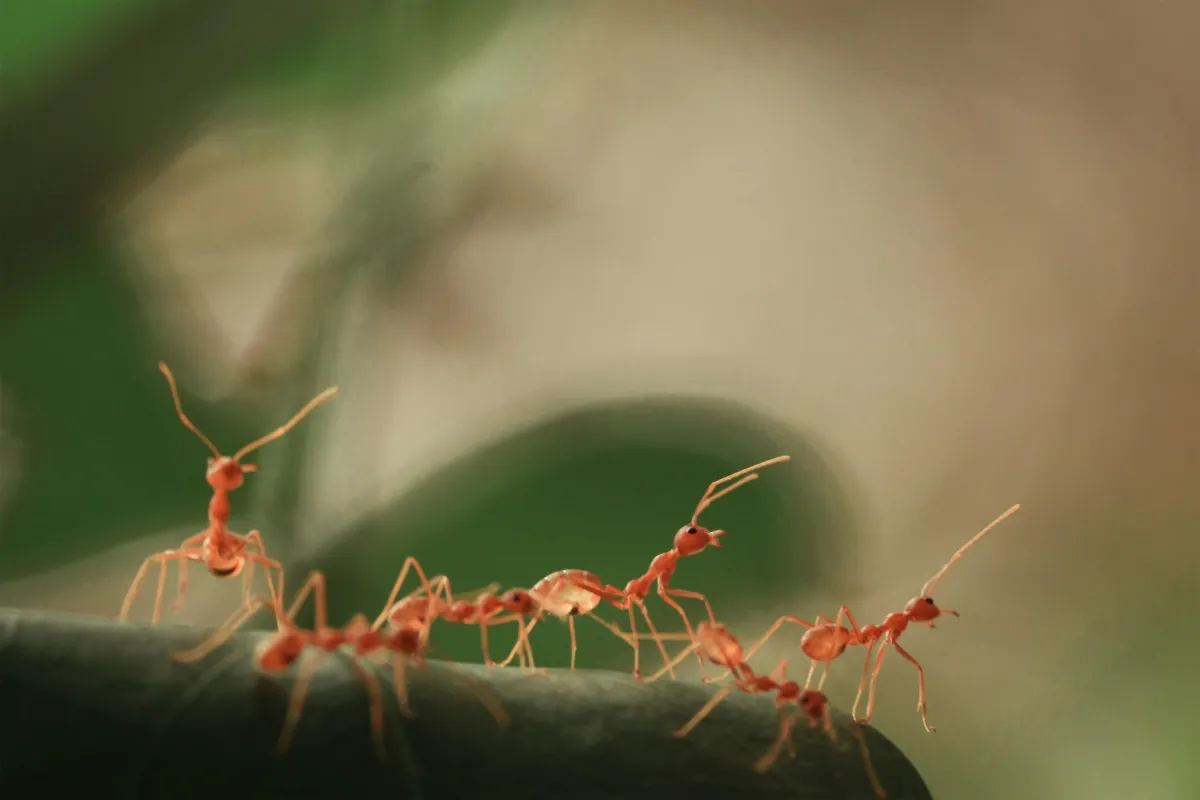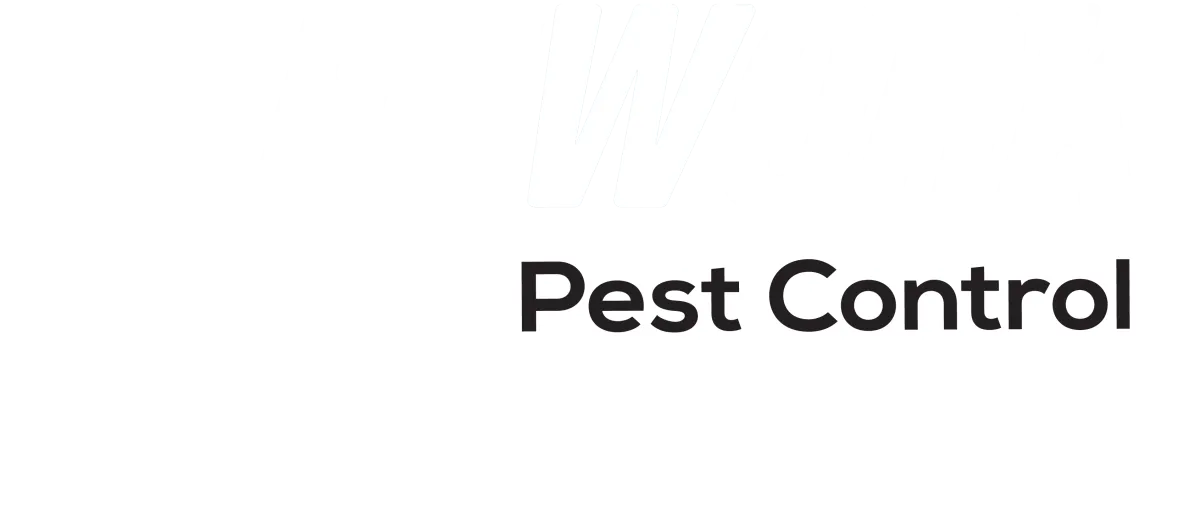Blog
Explore insightful and informative pest control blogs

Ant control methods
Ant control is important for many reasons. Ants can contaminate food, build nests in walls and cupboards, damage furniture and woodwork, and cause health problems. Ants also can spread disease-causing bacteria to humans, although this is rare. Ants are also attracted to sweet substances and will enter homes or other buildings in search of food sources. If left unchecked, the ant population may rapidly grow and become a nuisance. Ant control is important to protect both property and people from the nuisance of ants and the potential health risks they pose. Additionally, controlling ant populations helps maintain a healthy balance of ant species within our environment as certain species can displace or outcompete native species.
Ants are a diverse species, and there are around 12,000 known species of ants. Ants vary in size, ranging from just two millimeters to almost an inch in length! They also vary in color, with some species being red, black, yellow or even iridescent. While many people think of ants as small scavengers that live in large colonies underground and feed on scraps of food they find if they venture into a home kitchen, some ant species act very differently. Some ants live in trees and make nests by chewing the leaves and twigs into a paper-like substance. Some have predatory behaviors that allow them to hunt small animals such as spiders or other insects. Others may farm fungi or cultivate crops like aphids to feed on their sugary secretions. The most widespread type of ant is the harvester ant which has different strategies for obtaining food depending on its location; it can collect seeds from wild grasses or raid stored grains from human habitations. There are also army ants which swarm over their prey and forest floor dwellers that create nests between the roots of trees. No matter what type of ant we look at, however, all species exhibit eusocial behavior;
The most common ant control methods include physical removal, mechanical traps, and chemical treatments. Physical removal typically involves removing affected plants, clearing away organic debris, and sealing cracks or crevices in which ants may be entering a home or building. Mechanical traps can include anything from sticky tape to baited traps designed to capture the ants and keep them from entering an area. Chemical treatments are also available for controlling ant populations, including liquid sprays and powder-based insecticides. It is important to note that while these methods may be effective in controlling ants, they do not guarantee elimination of a population. For larger infestations, it is recommended that professional pest control services are employed in order to ensure the most complete elimination of an ant problem.

Chemical Treatments:
Chemical treatments work by introducing substances into the environment that have an effect on a specific target organism or organisms. Common chemical treatments include pesticides, which are used to kill unwanted insects and other pests, as well as herbicides, which are designed to kill weeds. In some cases, the chemicals may be toxic to humans or other organisms, so care must be taken when using such treatments. Other chemical treatments can also be used for controlling disease-causing organisms, such as bacteria and fungi. These types of treatments often involve introducing anti-microbial agents that will disrupt the growth and spread of pathogens. Finally, chemical treatments can also be used to enhance the growth of certain desirable plants by providing supplemental nitrogen and other essential nutrients needed for healthy growth.
. Chemical treatments are a type of pest control that makes use of chemicals to reduce the population of unwanted pests in an environment. These treatments can have both advantages and disadvantages. One advantage of using chemical treatments is that they tend to be effective in controlling most types of pests, including insects, rodents, and fungus. In many cases, their effects are almost immediate and there is no need for repeated applications. They also tend to be relatively inexpensive compared to other forms of pest control. On the other hand, chemical treatments can have negative environmental impacts due to the toxins being used to kill the pests. This could include toxic run-off from treated areas into water sources or air contamination from airborne sprays. Chemicals used in these treatments may also pose a health risk if not used carefully and correctly in accordance with manufacturer instructions. Finally, many pests can develop a resistance to certain chemicals over time, making them less effective or even useless against those pests.
When discussing safety considerations for chemical treatments, it is important to consider the effects of any hazardous chemicals used on the environment and human health. Depending on what type of chemical is being used, people in the surrounding areas may be exposed to dangerous fumes or other particles. It is also important to assess how long these chemicals will linger and remain in the environment after application. Residue from chemical treatments can end up in water sources if not properly disposed of, which can lead to contamination. The safety and health of workers administering the treatment should be taken into consideration as they will be in close contact with potentially harmful chemicals, including wearing proper protective equipment and following instructions for safe handling. Additionally, it is important that all chemicals used meet safety guidelines established by regulatory bodies such as OSHA and EPA regulations.
Baits:

Baits are one of the most common methods for pest control. They are typically comprised of a substance that is attractive to the target pest, and also contain a poison which will kill them once it has been ingested. Pests can be attracted to baits in several ways, depending on the species. Some pests may be drawn to sweet or sugary substances, while others may respond better to an oily or fatty food source. Other baits may mimic the pheromones that certain pests use in order to attract each other, thus luring them into a poisonous trap. Once a bait is placed and consumed by the pest, they will usually die within a few hours of ingestion. In some cases this may take days, as different poisons work at different speeds depending on the type of pest it’s meant to target and how they process their food to control pest populations.
Advantages of using baits and traps to control pest populations include the ability to target specific pests, a low environmental impact, and cost-effectiveness. Baits are often used to attract certain pests, such as rodents or insects, and can then be killed or removed with a trap or poison. This can help reduce their population in an area while minimizing the destruction of beneficial species. Traps are also useful for reducing the spread of disease carried by pests. Disadvantages of using baits and traps include the possibility of attracting more pests than intended, incorrect trapping that can cause injury to non-target species, and the possibility of poisons from bait entering the food chain. Additionally, it is important to remember that baiting and trapping may not be able to completely eliminate pest populations in an area as new individuals may move into the area from elsewhere. As such, multiple strategies should be employed for effective pest control.
Examining safety considerations for using baits is important, especially when baits are used around children, pets, and other vulnerable people or animals. Baits contain active ingredients that can be toxic if ingested or touched, so they must be used with caution. It is essential to read all instructions on the product label before applying any bait to ensure proper handling and safe use. Additionally, baits should always be stored in a secure location away from children and pets in order to prevent accidental ingestion or contact. When disposing of empty bait containers and packaging, it is important to responsibly do so by either following regulations or by properly sealing the material and throwing it away in the garbage. By examining safety considerations while using baits at home, everyone can help protect themselves and those around them.

Natural Remedies:
Natural remedies can be used to control ants in a variety of ways. One of the most common methods is to sprinkle a combination of borax and sugar around the perimeter of your home or garden, as ants are attracted to sugar but repelled by borax. Additionally, you can use natural deterrents such as peppermint oil and citrus peel to keep ants away. Peppermint oil has a strong scent that many types of ants dislike, and citrus peels contain an acid that will repel them. You can also create a homemade anti-ant spray by combining water, vinegar, and lemon juice into a spray bottle. This mixture has an overpowering smell that will drive away any ant infestation. Finally, diatomaceous earth is another excellent solution for controlling ant populations as it contains tiny particles that are able to cut through their exoskeletons when they come into contact with it.

A conclusion on the importance of taking preventive measures to control ants is critical due to the fact that they are a nuisance in our homes and their numbers can quickly get out of control. Ants can be a major inconvenience as they contaminate food, damage furnishings and structures, and spread disease. Taking preventive measures such as sealing cracks and crevices in your home, eliminating potential sources of food or water, regularly inspecting areas where ant activity is suspected, and using ant repellents can go a long way toward controlling an ant infestation before it becomes unmanageable. Additionally, if you do find yourself with an infestation, contact a professional exterminator for assistance in determining the best course of action for effectively eliminating the ants from your home. Taking preventive measures to control ants is essential for preserving our homes environment and health.
It is important to use a combination of ant control methods in order to achieve the best outcome. Using multiple methods together can effectively limit the number of ants entering your home, reduce their nesting sites, and disrupt their ability to communicate and cooperate with each other. These methods may include baiting, trapping, exclusion, physical removal, and using insecticides. Baiting involves placing food that contains an insecticide inside or outside an area where ants are foraging for food. This allows the ants to spread the poison throughout their colony. Traps can be placed at entry points to capture large numbers of ants as they enter a property. Exclusion involves making physical changes to your property such as caulking and sealing cracks and crevices in order to prevent ants from entering your home. Physical removal methods involve manually removing colonies from inside walls or from under patios or decks. And finally, insecticides can be used around the perimeter of a building or near ant trails in order to reduce ant populations by killing them directly when they come into contact with the poison. Using a combination of these control methods can help eradicate ant infestations quickly and effectively while also preventing future problems from arising.
Don't let pests put a damper on your Northwest Arkansas lifestyle - Network Pest Control has the most effective, safe and environmentally friendly methods to get rid of your pest problem - fast! Contact us today for a free consultation or inspection and take back control of your home and business!
Craving a Superior Pest Control Solution?
COMPANY STORY
& EXPERIENCE
Craig Broadhead started his pest business in 2004 in California, called Pacific Pest Control. In 2021, he sold his business and moved his family to Arkansas to start fresh with a new vision of Network Pest Control. His goal it to make sure each customer has the best experience possible.


Network Pest Control
11205 Meadow Lark Rd. Rogers AR 72756
479.888.4249
